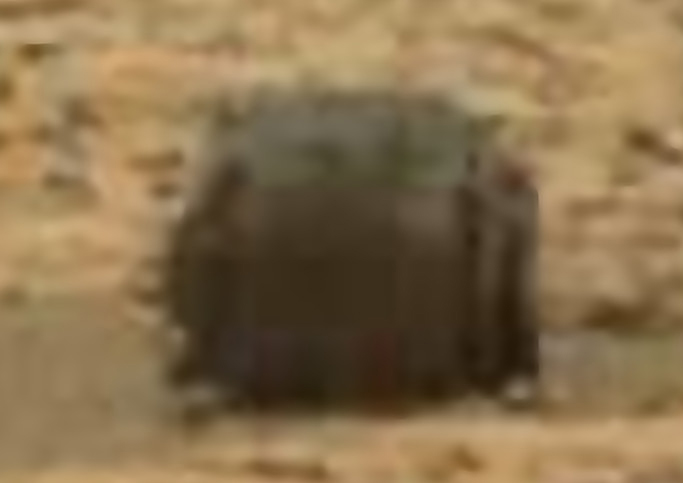It looks like you're using an Ad Blocker.
Please white-list or disable AboveTopSecret.com in your ad-blocking tool.
Thank you.
Some features of ATS will be disabled while you continue to use an ad-blocker.
share:
a reply to: 0bserver1
Here is the link to the image you posted:
mars.jpl.nasa.gov...
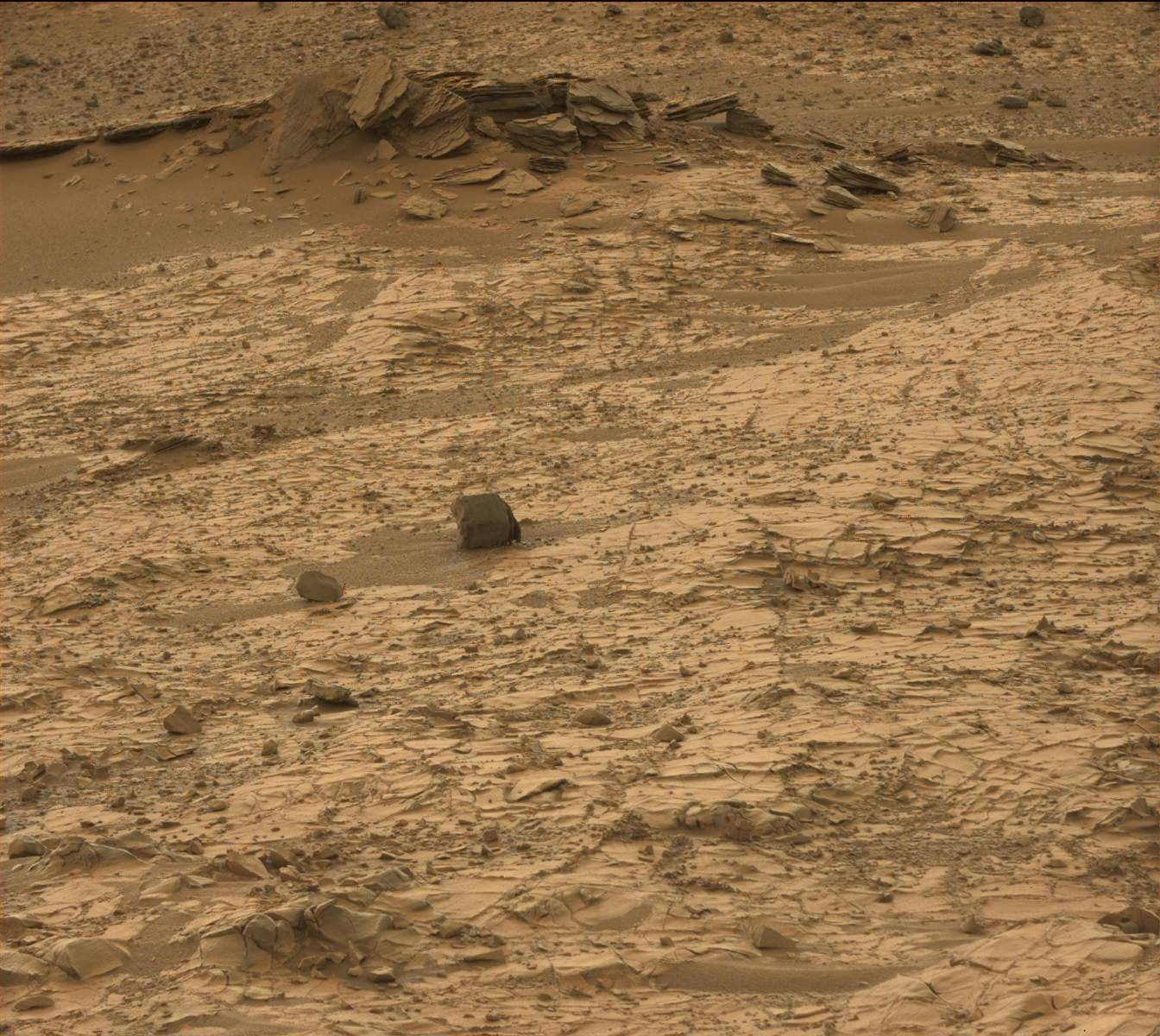
To me, this is not case closed.
Here is the link to the image you posted:
mars.jpl.nasa.gov...

To me, this is not case closed.
a reply to: Shaded27
ok let's say it out loud , you are thinking about a pillar of something ? Hmmm got me thinking though. ..
ok let's say it out loud , you are thinking about a pillar of something ? Hmmm got me thinking though. ..
edit on 0b22America/ChicagoFri, 31 Oct 2014 06:58:22 -0500vAmerica/ChicagoFri, 31 Oct 2014 06:58:22 -05001 by 0bserver1 because: (no reason
given)
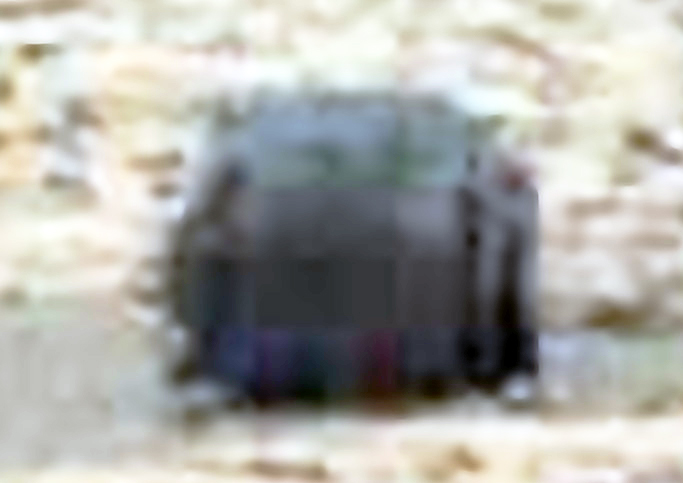
Enhanced a bit and magnified to me shows editing by NASA. The edge is cut perfectly straight off on the right as well as other anomalies. Editing anomalies are all NASA, not caused by enhancement, but enhancing magnifies the editing in my view.
It's definitely an electric device in my opinion, and no modern spacecraft from Earth have motors that look like that. This is something else.
a reply to: NoCorruptionAllowed
The thing about those squares... I think they are pixels from the actual image itself.
The thing about those squares... I think they are pixels from the actual image itself.
a reply to: nukedog
You can see them also not on the object, but they don't stop anyone from seeing the object itself.
On the sides where there are smaller details like 2 strands, and on the right vented construction for cooling, but only in some spots are there big square pixels and not in others gives the impression of obfuscation.
You can see them also not on the object, but they don't stop anyone from seeing the object itself.
On the sides where there are smaller details like 2 strands, and on the right vented construction for cooling, but only in some spots are there big square pixels and not in others gives the impression of obfuscation.
a reply to: Blister
I have to agree with you, i dont feel the second picture settles the case as a rock, if anything it further enhanced my view it is something not natural. Im leaning toward some pillar or statue.
Furthermore i find the whole image interesting. The hill of rocks behind the object has a block that does not look natural, as in the image looks modified in some way. The top of the the group of rock that i feel has been altered does not fit and is of different texture/makeup as those around. Furthermore iyt is slightly more blurred.
Finally and i know it is a bit of a reach, but at the very top of the image there is a boulder that i feel resembles some sort of statue head, the best way i can describe it is it reminds me of a samurai helmet and face in the centre. It maybe just a trick of the pixels, however i have tried to change it with some software and it remains prominent
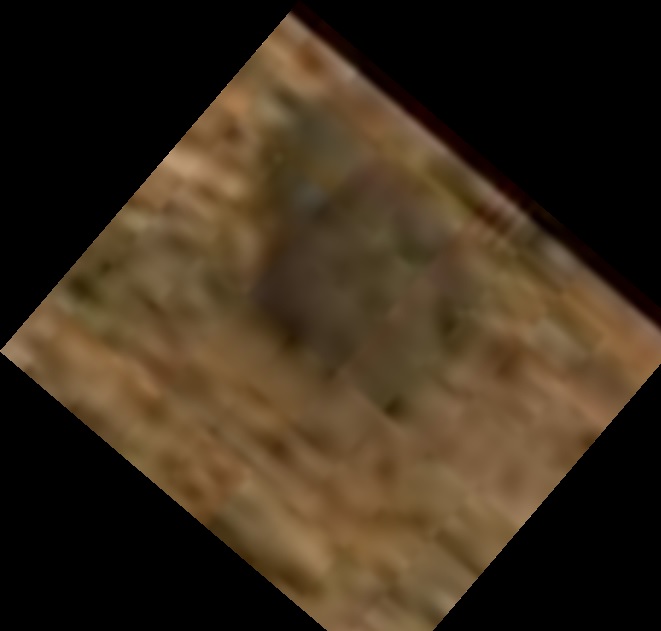
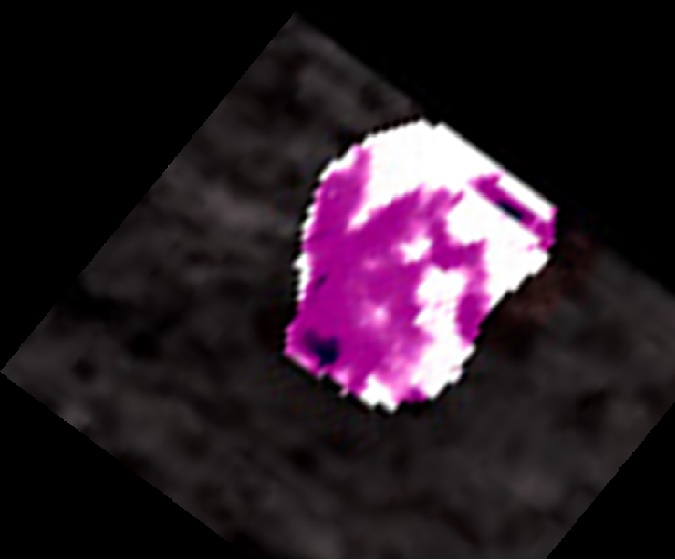
am i mad and seeing things?
I have to agree with you, i dont feel the second picture settles the case as a rock, if anything it further enhanced my view it is something not natural. Im leaning toward some pillar or statue.
Furthermore i find the whole image interesting. The hill of rocks behind the object has a block that does not look natural, as in the image looks modified in some way. The top of the the group of rock that i feel has been altered does not fit and is of different texture/makeup as those around. Furthermore iyt is slightly more blurred.
Finally and i know it is a bit of a reach, but at the very top of the image there is a boulder that i feel resembles some sort of statue head, the best way i can describe it is it reminds me of a samurai helmet and face in the centre. It maybe just a trick of the pixels, however i have tried to change it with some software and it remains prominent


am i mad and seeing things?
a reply to: 0bserver1
Good question. Naturally, such a question can be asked of the reverse.
On the issue as to why I feel that this is most definitely not "case closed", there are a number of things about the object of interest that should be pointed-out.
1. We now have two good colour pictures of the object from multiple angles of view. This is critical in ascertaining the true shape of the object and creation of a digital model. I have no idea if this is being worked upon, but it would be nice. Even unusual or geologically notable rocks deserve modelling.
2. Initial examination of the original picture (mars.jpl.nasa.gov...) suggested a convex curvature to the object with hints of horizontal lines which could be image artefacts or otherwise explainable aberrations). Observers suggested the object to be an engine, battery, rocket part, beer keg, and even a rock(!).
3. The second colour picture elicits even greater excitement for it provides a much better view of the object. Taken from a new position and providing another angle of view we can now see that the object has at-least three rib-like protuberances under what appears to be badly damaged (crushed, crumpled?) outer shell or casing that would at some stage appeared convex.
4. The object appears to have a lid or end piece on one side or end. Speculation as to what this could be - in both pictures it seems to be multi-layered - includes layered rock, ventilation spaces, casing surface. Wild speculation as to alternative hypotheses is just that - wild. This is because we do not know, even given our understanding that yes this object could be rock, and indeed should be rock given probability and reasoning (after all, Mars is full of rocks, right).Nevertheless, the layered points of interest look unnatural and may deserve even closer attention. My own opinion, considers that the object has been very seriously damaged, its integrity compromised, and the different structures that were used to create it have been damaged (ribbing, casing) forced aside or torn off in a semi-nature (the layered appearance at one end), or even forced apart and now lies away from the object.
5. The second colour image shows a small, possibly circular mark on the lower left side or end of the object. If this is a hole, then it may match scale and appearance of a similar object seen elsewhere and noted on ATS previously.
I would like a much closer 360 degree record of the object with a full workover with the SAM instrument suite (mars.jpl.nasa.gov...). I would also like a look at the internal structure and makeup of the object, both of which may require penetration of the object.
Whilst Curiosity does not seem to have the tool designed for the latter task, it may be possible to safely adapt the tools to the purpose. This is however, in my opinion, not possible - so we will have to wait.
The object of interest lies about ten metres away on terrain that is relatively solid and flat and covered in small sharp-edged rocks. If MSL Curiosity was to travel to within two metres of the object, some damage to its wheels is probable. That is not desirable, but given its current position, such damage will be sustained inevitably in the next few drives.
That is all for now. Yeah, it is a damn interesting thing.
Good question. Naturally, such a question can be asked of the reverse.
On the issue as to why I feel that this is most definitely not "case closed", there are a number of things about the object of interest that should be pointed-out.
1. We now have two good colour pictures of the object from multiple angles of view. This is critical in ascertaining the true shape of the object and creation of a digital model. I have no idea if this is being worked upon, but it would be nice. Even unusual or geologically notable rocks deserve modelling.
2. Initial examination of the original picture (mars.jpl.nasa.gov...) suggested a convex curvature to the object with hints of horizontal lines which could be image artefacts or otherwise explainable aberrations). Observers suggested the object to be an engine, battery, rocket part, beer keg, and even a rock(!).
3. The second colour picture elicits even greater excitement for it provides a much better view of the object. Taken from a new position and providing another angle of view we can now see that the object has at-least three rib-like protuberances under what appears to be badly damaged (crushed, crumpled?) outer shell or casing that would at some stage appeared convex.
4. The object appears to have a lid or end piece on one side or end. Speculation as to what this could be - in both pictures it seems to be multi-layered - includes layered rock, ventilation spaces, casing surface. Wild speculation as to alternative hypotheses is just that - wild. This is because we do not know, even given our understanding that yes this object could be rock, and indeed should be rock given probability and reasoning (after all, Mars is full of rocks, right).Nevertheless, the layered points of interest look unnatural and may deserve even closer attention. My own opinion, considers that the object has been very seriously damaged, its integrity compromised, and the different structures that were used to create it have been damaged (ribbing, casing) forced aside or torn off in a semi-nature (the layered appearance at one end), or even forced apart and now lies away from the object.
5. The second colour image shows a small, possibly circular mark on the lower left side or end of the object. If this is a hole, then it may match scale and appearance of a similar object seen elsewhere and noted on ATS previously.
I would like a much closer 360 degree record of the object with a full workover with the SAM instrument suite (mars.jpl.nasa.gov...). I would also like a look at the internal structure and makeup of the object, both of which may require penetration of the object.
Whilst Curiosity does not seem to have the tool designed for the latter task, it may be possible to safely adapt the tools to the purpose. This is however, in my opinion, not possible - so we will have to wait.
The object of interest lies about ten metres away on terrain that is relatively solid and flat and covered in small sharp-edged rocks. If MSL Curiosity was to travel to within two metres of the object, some damage to its wheels is probable. That is not desirable, but given its current position, such damage will be sustained inevitably in the next few drives.
That is all for now. Yeah, it is a damn interesting thing.
edit on 31-10-2014 by Blister because: (no reason given)
a reply to: 0bserver1
This one (the different angle shot) looks totally edited by NASA to me. The object's facing to camera looks like it had a brush effect that puts this same "covering" across it's mass like a hide all sort of coat. The same exact effect can be seen on tons of their "only rocks".
If this is that same "motor" object, then I call BS on NASA, but then they lie quite often, so I tend to lean towards anomaly even when they are rocks. That's the trouble with a liar, once they get caught, it's hard to trust them again, and they have been caught lying before. Look at how Obama does it, and even a crappy liar like him still has tons of true believers that think he's clean as a whistle and doesn't lie. NASA is better at it though because they send us nice images and pretty pictures daily. (They pay us to believe whatever they say).
This one (the different angle shot) looks totally edited by NASA to me. The object's facing to camera looks like it had a brush effect that puts this same "covering" across it's mass like a hide all sort of coat. The same exact effect can be seen on tons of their "only rocks".
If this is that same "motor" object, then I call BS on NASA, but then they lie quite often, so I tend to lean towards anomaly even when they are rocks. That's the trouble with a liar, once they get caught, it's hard to trust them again, and they have been caught lying before. Look at how Obama does it, and even a crappy liar like him still has tons of true believers that think he's clean as a whistle and doesn't lie. NASA is better at it though because they send us nice images and pretty pictures daily. (They pay us to believe whatever they say).
edit on 31-10-2014 by NoCorruptionAllowed because: (no reason given)
edit on 31-10-2014 by NoCorruptionAllowed because: (no
reason given)
originally posted by: raymundoko
a reply to: NoCorruptionAllowed
That's caused form zooming in.
I'm focusing on the radically different and large squares that look to be replacing what was actually there because there are other places on the object with much smaller and very clear details that don't resemble a big block of blurred texture like they used to hide something.
The ones I'm mentioning are totally different colors on top or near top of object and also and don't match the rest of the object, plus the original image shows a perfect right side that cuts straight down which also doesn't match the ground and terrain right next to it.. Total hack and slash editing.
I'm fascinated by how some images can garner the attention of some people, while there are hundreds of other images sitting in the archives with much
better indications of shapes that look like fossil creatures or artifacts. You can almost pick them at random and find at least one thing in each one
that catches your eye.
originally posted by: Blue Shift
I'm fascinated by how some images can garner the attention of some people, while there are hundreds of other images sitting in the archives with much better indications of shapes that look like fossil creatures or artifacts. You can almost pick them at random and find at least one thing in each one that catches your eye.
Definitely, and in every single case, the majority still seem to support what NASA says it is, even when they came out and said there was going to be a big announcement and then didn't make it not too long ago.
This is a pattern of response and totally suspect in my opinion.
a reply to: Robb760
You know, I just had to laugh, because if I didn't know
the context of those pictures I would have guessed they
were from the original Star Wars movie Tatooine scenes,
even the pics have that 1977 look to them.
Not trying poke fun, It really does look like a motor or
something, at least a round rock, are those common?
I admit, it does look like part of a mechanical device.
Rebel 5
You know, I just had to laugh, because if I didn't know
the context of those pictures I would have guessed they
were from the original Star Wars movie Tatooine scenes,
even the pics have that 1977 look to them.
Not trying poke fun, It really does look like a motor or
something, at least a round rock, are those common?
I admit, it does look like part of a mechanical device.
Rebel 5
edit on 31-10-2014 by rebelv because: delete link; didn't work
new topics
-
DOJ Special Counsel Robert HUR Says JOE BIDEN Can Be ARRESTED After Jan 20th 2025.
Above Politics: 4 minutes ago -
More Proof of Lawfare
US Political Madness: 6 hours ago -
I thought Trump was the existential threat?
World War Three: 8 hours ago -
Interesting Video-UFO?
Aliens and UFOs: 9 hours ago -
Joe Biden Dabs Away Tears at Farewell White House Dinner
Politicians & People: 9 hours ago
top topics
-
I thought Trump was the existential threat?
World War Three: 8 hours ago, 18 flags -
More Proof of Lawfare
US Political Madness: 6 hours ago, 17 flags -
Joe Biden Dabs Away Tears at Farewell White House Dinner
Politicians & People: 9 hours ago, 9 flags -
Interesting Video-UFO?
Aliens and UFOs: 9 hours ago, 6 flags -
DOJ Special Counsel Robert HUR Says JOE BIDEN Can Be ARRESTED After Jan 20th 2025.
Above Politics: 4 minutes ago, 0 flags
active topics
-
More Proof of Lawfare
US Political Madness • 22 • : underpass61 -
Joe Biden Dabs Away Tears at Farewell White House Dinner
Politicians & People • 22 • : chr0naut -
I thought Trump was the existential threat?
World War Three • 48 • : fringeofthefringe -
DOJ Special Counsel Robert HUR Says JOE BIDEN Can Be ARRESTED After Jan 20th 2025.
Above Politics • 0 • : WeMustCare -
Petition Calling for General Election at 564,016 and rising Fast
Political Issues • 88 • : Freeborn -
Well, here we go red lines crossed Biden gives the go ahead to use long range missiles
World War Three • 360 • : Freeborn -
Encouraging News Media to be MAGA-PAF Should Be a Top Priority for Trump Admin 2025-2029.
Education and Media • 79 • : DBCowboy -
BIDEN and Zelenskyy are Putting Together a TEN YEAR Package of Weapons -n- Cash for Ukraine.
World War Three • 24 • : WeMustCare -
The Acronym Game .. Pt.4
General Chit Chat • 983 • : FullHeathen -
Results of the use of the Oreshnik missile system in Dnepropetrovsk
World War Three • 228 • : Flyingclaydisk

